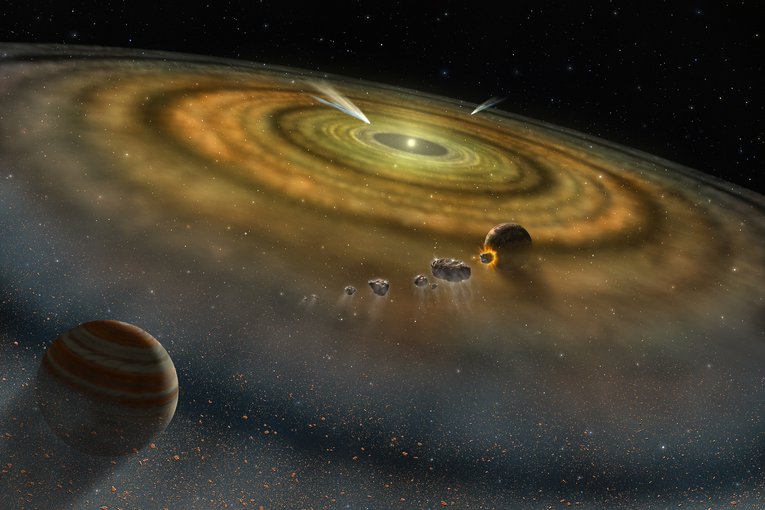
Nov. 9, 2018
Research Highlight
A Nebular Origin of Earth's Water

Artist's conception of the dust and gas surrounding a newly formed planetary system.Image credit: NASA.
Researchers have presented a new model for the origin of Earth’s water. Liquid water is a requirement for life as we know it, and the origin of water on Earth is an essential piece in determining how our planet became habitable. The model was inspired by recent developments in planetary formation theory, which suggest that the solar nebula could have been a source of some of Earth’s hydrogen. The new model is the first to incorporate this contribution from the solar nebula in addition to that of chondrites. The results indicate that one out of every one hundred water molecules on Earth can be tied back to the solar nebula. The study also claims that water is likely to form on any large, rocky planet beyond the Solar System.
The study, “Origin of Earth’s Water: Chondritic Inheritance Plus Nebular Ingassing and Storage of Hydrogen in the Core,” was published in the Journal of Geophysical Research: Planets. The work was supported by the Nexus for Exoplanet System Science (NExSS). NExSS is a NASA research coordination network supported in part by the NASA Astrobiology Program. This program element is shared between NASA’s Planetary Science Division (PSD) and the Astrophysics Division.